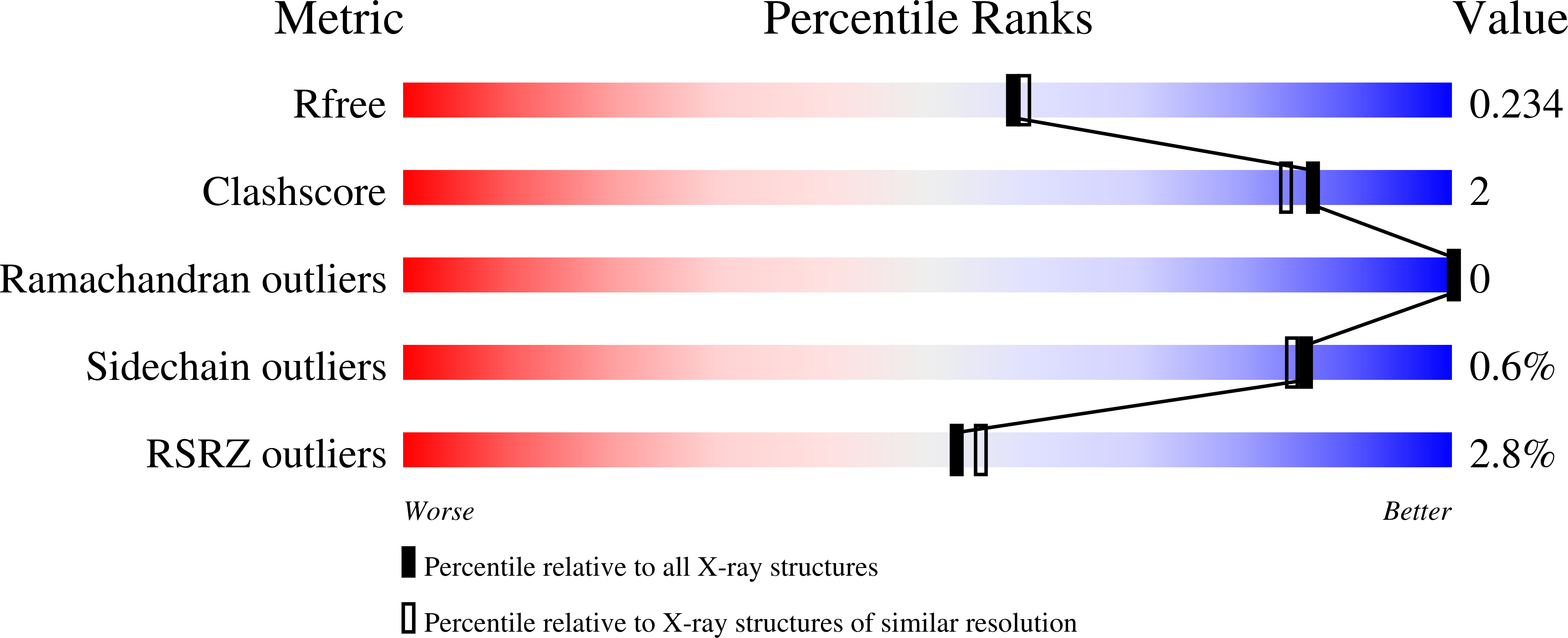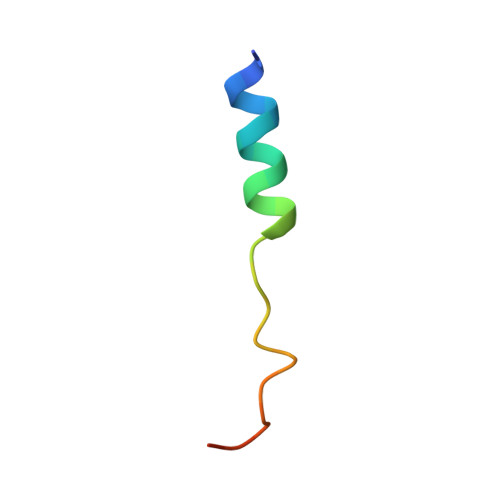Structural Fine-Tuning of Mit Interacting Motif 2 (Mim2) and Allosteric Regulation of Escrt-III by Vps4 in Yeast.
Kojima, R., Obita, T., Onoue, K., Mizuguchi, M.(2016) J Mol Biol 428: 2392
- PubMed: 27075672
- DOI: https://doi.org/10.1016/j.jmb.2016.04.007
- Primary Citation of Related Structures:
5FVK, 5FVL - PubMed Abstract:
The endosomal sorting complex required for transport (ESCRT) facilitates roles in membrane remodeling, such as multivesicular body biogenesis, enveloped virus budding and cell division. In yeast, Vps4 plays a crucial role in intraluminal vesicle formation by disassembling ESCRT proteins. Vps4 is recruited by ESCRT-III proteins to the endosomal membrane through the interaction between the microtubule interacting and trafficking (MIT) domain of Vps4 and the C-terminal MIT-interacting motif (MIM) of ESCRT-III proteins. Here, we have determined the crystal structure of Vps4-MIT in a complex with Vps20, a member of ESCRT-III, and revealed that Vps20 adopts a unique MIM2 conformation. Based on structural comparisons with other known MIM2s, we have refined the consensus sequence of MIM2. We have shown that another ESCRT-III protein, Ist1, binds to Vps4-MIT via its C-terminal MIM1 with higher affinity than Vps2, but lacks MIM2 by surface plasmon resonance. Surprisingly, the Ist1 MIM1 competed with the MIM2 of Vfa1, a regulator of Vps4, for binding to Vps4-MIT, even though these MIMs bind in non-overlapping sites on the MIT. These findings provide insight into the allosteric recognition of MIMs of ESCRT-III by Vps4 and also the regulation of ESCRT machinery at the last step of membrane remodeling.
Organizational Affiliation:
Faculty of Pharmaceutical Sciences, University of Toyama, 2630 Sugitani, Toyama 930-0194, Japan.















